If you’re considering new siding for your home, you may be wondering what the best option is.
There are a lot of choices out there, but two of the most popular are vinyl siding and Hardie board.
So, which is the better option?
Let’s take a look at vinyl siding vs. Hardie board to see which one comes out on top.
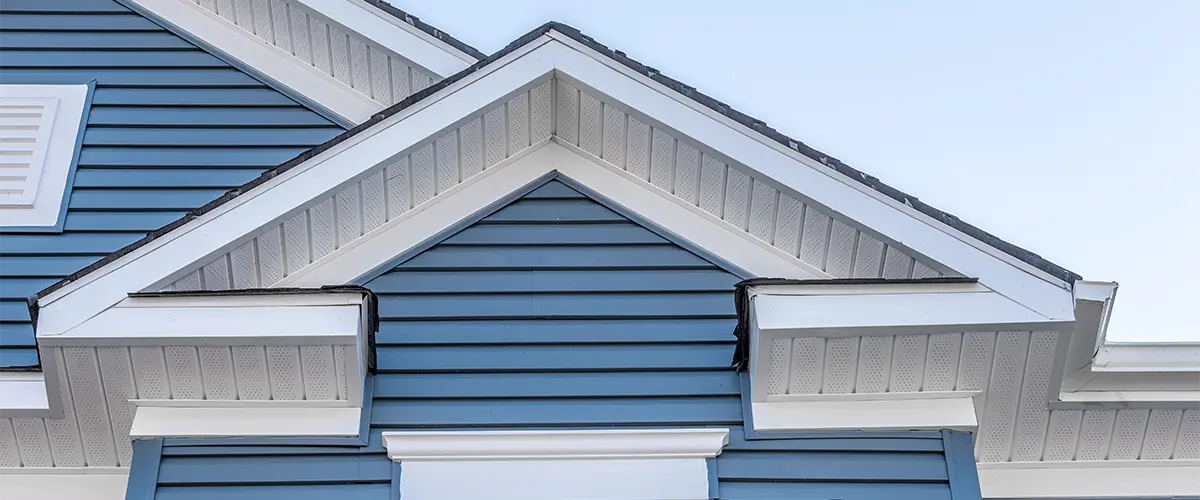
Pros and Cons of Vinyl Siding vs. Hardie Board
| Aspect | Vinyl Siding | Hardie Board |
|---|---|---|
| Advantages |
|
|
| Disadvantages |
|
|
An Overview of Vinyl Siding and Hardie Board
Have you ever heard the terms “vinyl siding” or “Hardie board” but weren’t sure what they meant?
In the world of home remodeling, these two materials are becoming increasingly popular.
Let’s dive into what vinyl siding and Hardie board are so that you can make an informed decision on which one best fits your needs.
Vinyl Siding
Vinyl siding is a synthetic material made from polyvinyl chloride (PVC). It was invented in the 1950s as a cheaper alternative to wood siding and has since become one of the most popular forms of exterior siding for homes across Canada.
Vinyl is lightweight and easy to install, making it a great choice for DIYers. It also requires very little maintenance, making it an attractive option for homeowners looking to minimize their upkeep costs.
The main drawback of vinyl siding is that it isn’t as durable as other materials like brick or stone. It can fade over time and be damaged by hail or strong winds.
Additionally, some people find its appearance too artificial-looking compared to natural materials like wood or stone.
Hardie Board
Hardie board is a brand of fiber cement siding created by James Hardie Industries in Australia in the early 1980s.
Hardie board is made from a combination of cellulose fibers and cement, unlike vinyl siding, making it incredibly durable and resistant to wear and tear from weathering. It also provides excellent insulation for homes during extreme temperatures, helping homeowners save money on energy costs throughout the year.
While Hardie board has many advantages over traditional vinyl siding, it also comes with a few drawbacks. For starters, it is much heavier than the vinyl, so installation can be more challenging and expensive if professional assistance is required.
Additionally, due to its cement composition, Hardie board tends to be more expensive than other types of exterior siding available on the market today.
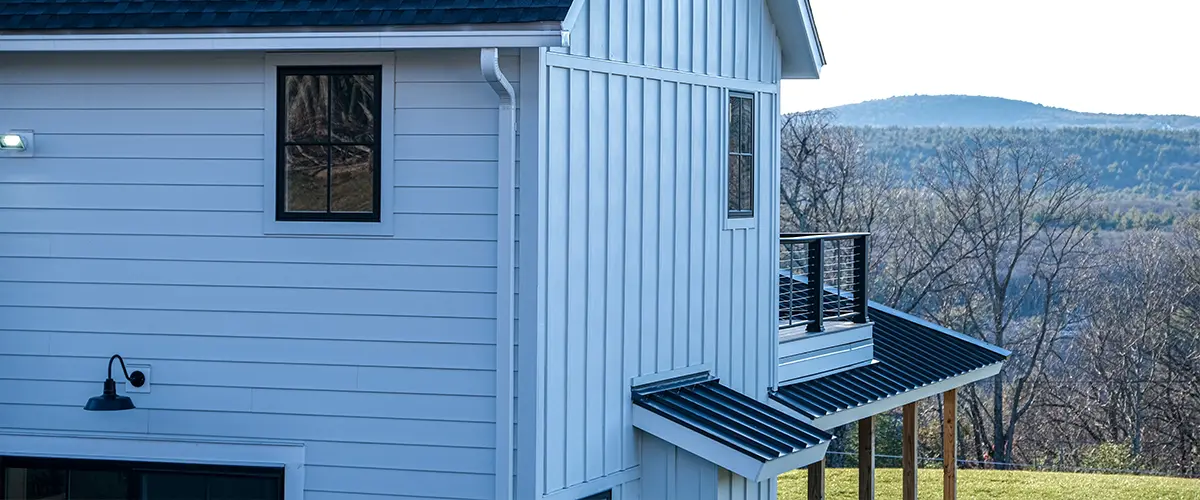
Vinyl Siding vs. Hardie Board: Which is Best for Your Climate?
Are you considering replacing the siding on your home and deciding between vinyl siding and Hardie board?
Both are popular options, but there are a few key factors to keep in mind when making your decision.
One of the most important factors is climate; some materials may not be suitable for certain climates. Let’s take a look at how climate can affect the performance of vinyl siding and Hardie board.
Vinyl Siding in Cold Climates
Vinyl siding is an affordable option that’s easy to install, and it’s generally quite durable. However, in cold climates, it may not be the best choice. That’s because vinyl isn’t as resistant to extreme temperatures or moisture as other materials.
In fact, if temperatures drop too low—below zero degrees Fahrenheit—vinyl can become brittle and even crack or break off in chunks. It also has a tendency to warp or sag due to ice dams forming on its surface.
If you live in a cold climate, you may want to consider alternatives such as Hardie board instead of vinyl siding.
Hardie Board in Hot Climates
Hardie board is made from cement fibers that have been bonded together with Portland cement and water-resistant resins.
This makes it incredibly durable and weather-resistant, making it perfect for hot climates where intense sunlight can cause other materials to fade over time. The material is also fire-resistant, so it won’t catch fire easily like wood or vinyl siding might if exposed to flames from nearby fires or heaters.
Plus, Hardie board comes pre-painted in an array of colors that won’t fade over time as paint applied directly onto wood or vinyl siding will eventually do.
And if you ever need to make repairs or replace sections of your Hardie board installation, all you need is a few specialized tools and some extra pieces of Hardie board—no painting necessary!
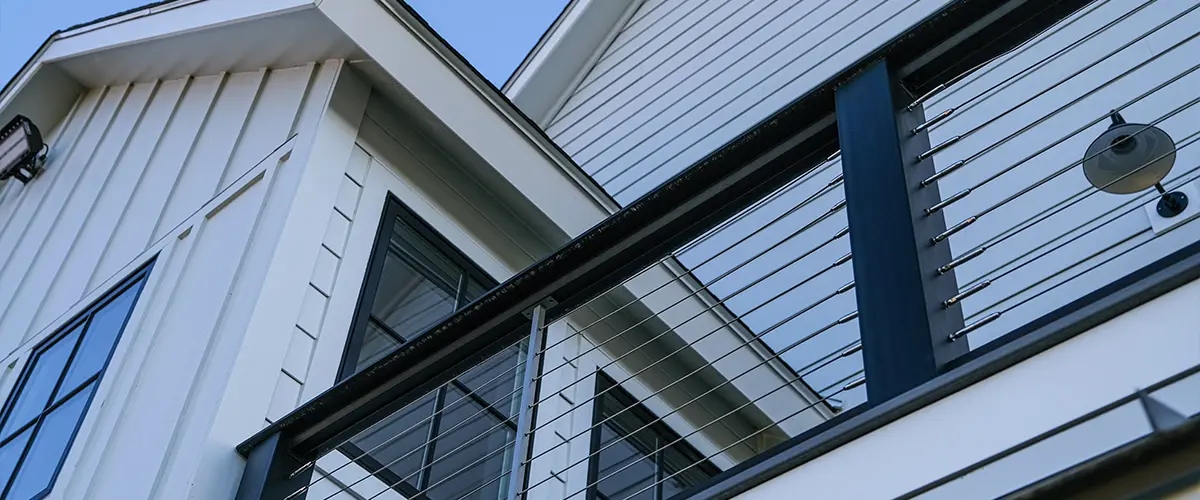
Comparing the Costs of Vinyl Siding vs. Hardie Board
Cost Comparison: Vinyl Siding vs. Hardie Board
| Vinyl Siding | Hardie Board | |
|---|---|---|
| Average Cost per Square Foot | $2 - $7 | $8 - $12 |
| Affordability | ✔️ | ❌ |
| Durability | ✖️ | ✔️ |
| Longevity | ✖️ | ✔️ |
| Maintenance | ✔️ | ✔️ |
| Installation Complexity | ✔️ | ✔️ |
| Aesthetic Customization | ✔️ | ✔️ |
Note: Check with local suppliers for current pricing and availability.
Vinyl Siding Cost
Vinyl siding stands out as an economical choice for homeowners aiming to enhance their property’s exterior.
With a price range of $2 to $7 per square foot, vinyl siding offers affordability compared to pricier alternatives like brick or stone.
Its lightweight composition eliminates the need for additional structural support during installation, contributing to cost savings. The variety of colors available also allows for aesthetic customization without straining your budget.
Hardie Board Cost
On the other hand, Hardie board, crafted from fiber cement, presents a higher upfront cost compared to vinyl siding.
The price hovers around $8 to $12 per square foot. This higher cost is attributed to the durability and enhanced lifespan that Hardie board offers.
Its ability to withstand extreme conditions, resist fire and insects, and require fewer repairs over time can potentially offset the initial investment.
Advantages of Vinyl Siding and Hardie Board
Advantages of Vinyl Siding
- Affordability: Vinyl siding is notably budget-friendly, making it an attractive option for those looking to enhance their home's appearance without breaking the bank.
- Easy Maintenance: This type of siding requires minimal upkeep. Unlike materials that demand regular painting or sealing, vinyl siding retains its color and shape without consistent maintenance efforts.
- Installation Ease: Vinyl siding's lightweight nature simplifies the installation process. Its reduced weight lessens the need for elaborate structural adjustments, which can contribute to reduced labor and installation costs.
- Versatile Aesthetic: Vinyl siding comes in a diverse range of colors, allowing homeowners to easily customize their home's visual appeal to match their preferred style.
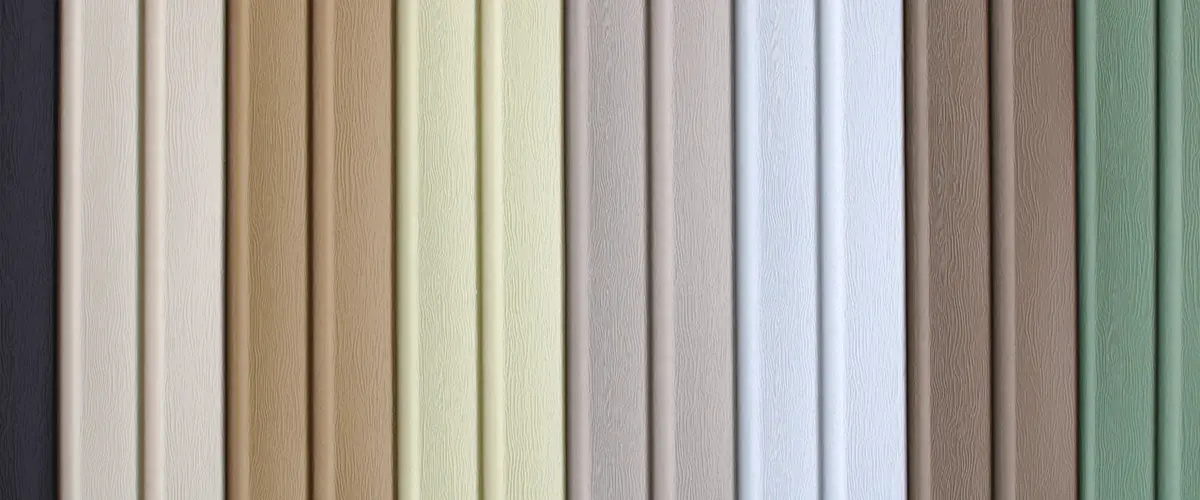
Advantages of Hardie Board
- Exceptional Durability: Hardie board's composition grants it exceptional durability, making it resistant to various environmental factors such as extreme weather, moisture, insects, and fire.
- Longevity: Its ability to withstand the test of time reduces the need for frequent repairs or replacements, ultimately offering long-term cost savings.
- Design Flexibility: Hardie board is available in numerous styles, textures, and colors, allowing homeowners to achieve the desired look for their home, whether it's modern, traditional, or anything in between.
- Weather Resilience: This siding material is particularly well-suited for regions with challenging climates, as it can endure harsh conditions without compromising its integrity.
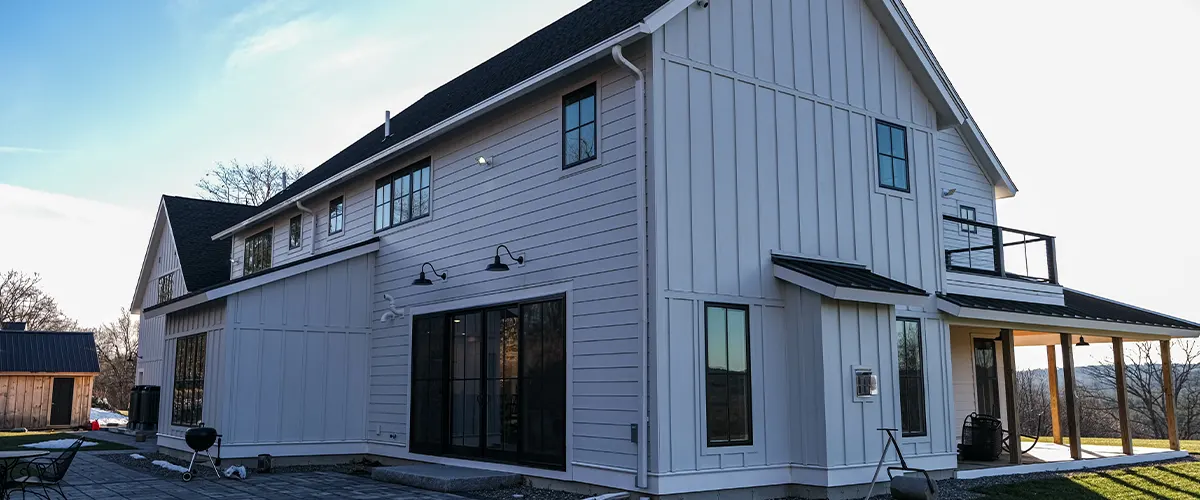
Vinyl Siding Vs. Hardie Board FAQs
The choice between Hardie Board and vinyl siding depends on your priorities.
Hardie Board offers exceptional durability and weather resistance, making it suitable for challenging climates.
Vinyl siding, on the other hand, is cost-effective and easy to maintain. Deciding which is better depends on your preferences for longevity, aesthetics, and budget.
The best siding for a house depends on various factors such as your budget, desired aesthetic, local climate, and maintenance preferences.
Hardie Board is excellent for durability and weather resistance, while vinyl siding is known for its affordability and low maintenance. It’s best to consider your priorities and consult with professionals to determine the optimal choice for your specific needs.
Hardie Board can positively impact home value due to its durability, visual appeal, and reputation as a premium siding material.
Potential buyers often recognize its quality and longevity, which can contribute to increased perceived value. However, the impact on home value can vary depending on the overall real estate market, location, and other factors.
Conclusion
There are many things to consider when you’re trying to decide which type of siding is right for your home.
Weigh the pros and cons of each option and think about what’s important to you in terms of aesthetics, durability, and maintenance. If you need help making a decision or want more information about our vinyl siding and Hardie Board offerings, get in touch with us.
We’d be happy to chat with you about your options and help you find the perfect solution for your home.
